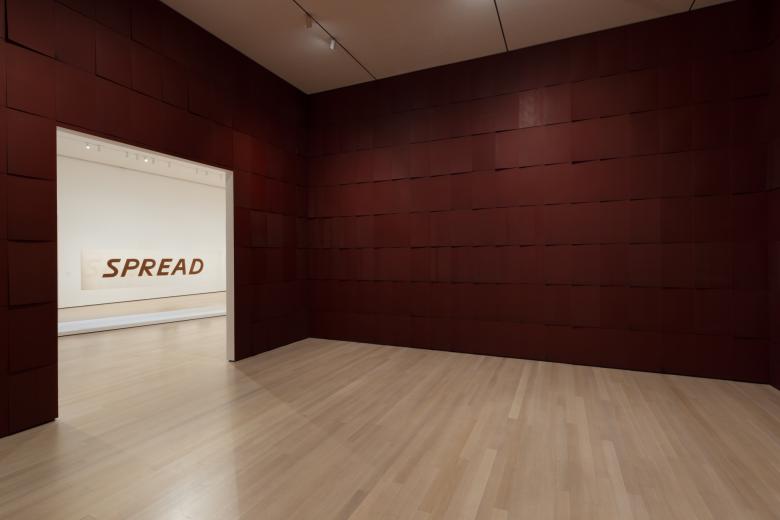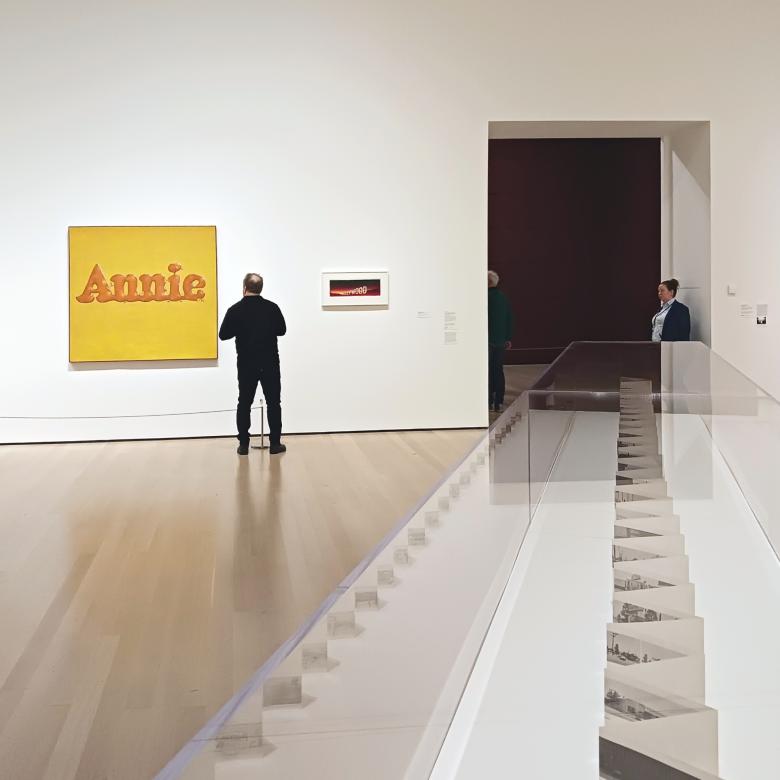A Taste of the Chocolate Room
John Hill
11. December 2023
Installation view of ED RUSCHA / NOW THEN, on view at The Museum of Modern Art from September 10, 2023 through January 13, 2024. (Photo: Jonathan Dorado)
A highlight of ED RUSCHA / NOW THEN, the comprehensive retrospective on Los Angeles artist Ed Ruscha now on display at the Museum of Modern Art (MoMA) in New York, is Chocolate Room, a gallery covered in more than 500 sheets of paper screen-printed with chocolate.
Although the Chocolate Room installation was made especially for the NOW THEN exhibition on the sixth floor of MoMA, the artwork dates back to 1970, when Ruscha was given a room in the US Pavilion at the Venice Art Biennale. He decided to cover the walls of the room with paper “shingles” printed with chocolate. Then — and now — it was an atypical material and artwork for Ruscha, an artist known for oil paintings with words and artist books collecting examples of mundane elements (gas stations, pools, parking lots) in urban environments. While these books endear Ruscha with architects, the same should also apply to Chocolate Room, the immersive room at the heart of NOW THEN, which World-Architects visited earlier today.
ED RUSCHA / NOW THEN is on view at MoMA until January 13, 2024.
One of Ruscha's artist books — the classic Every Building on the Sunset Strip from 1966 — sits in a vitrine set at an angle to the orthogonal walls and pointing directly toward Chocolate Room. (Photo: John Hill/World-Architects)
NOW THEN is a large exhibition that is split into roughly two halves, with Chocolate Room in the middle; the placement forces all visitors to pass through the installation. (Photo: John Hill/World-Architects)
As I stood in the room taking pictures and watching people, I noticed many people walked through either unaware or disinterested, but many more people stopped to look around and take photos of themselves in the immersive environment. (Photo: John Hill/World-Architects)
The screen-printed shingles covering four walls have a distinctive chocolatey color, but photos cannot capture the noticeable smell of chocolate that hits once entering the room. (Photo: John Hill/World-Architects)
The thin layer of chocolate on the sheets “blooms” depending on temperature, humidity, and other factors. Visible as streaks and other irregularities on the sheets, the effect is embraced by the artist. (Photo: John Hill/World-Architects)
Tests revealed that milk chocolate, though readily available in the US, did not look like chocolate when it printed due to low cocoa content, so Ruscha and his team used a Belgian dark chocolate to achieve a rich texture that printed well. (Photo: John Hill/World-Architects)
Some of the information in the above captions comes from this ten-minute video from MoMA on the making of Chocolate Room that is worth watching in its entirety:






